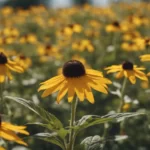Pine trees are a majestic and vital part of many landscapes, offering not only aesthetic beauty but also environmental benefits. However, like any living organism, they can become susceptible to stress, disease, and decline. Recognizing the signs that a pine tree is dying is crucial for taking timely action, whether it means saving the tree or preventing potential hazards that a dead tree might pose.
Pine Tree Health
To effectively identify a dying pine tree, it’s important to first understand what a healthy pine tree looks like. A healthy pine typically has lush, green needles, robust growth, and a sturdy, unblemished trunk. Factors influencing pine tree health include environmental conditions, such as soil quality and water availability, biological factors like diseases and pests, and human-related impacts such as physical damage or improper care. Understanding these elements can help in accurately diagnosing the health of your pine tree.
Physical Signs of Decline
There are several physical signs that can indicate a pine tree is in distress. One of the most visible is the condition of the needles. Discoloration, such as needles turning yellow, brown, or red, particularly outside of the fall season, can be a cause for concern. Needle drop that exceeds the normal seasonal shedding can also be a warning sign. In addition to foliage changes, the overall appearance and vigor of the tree can provide clues; a noticeable thinning of the canopy or stunted growth are signs that the tree is not in optimal health.
Inspecting the Tree’s Bark and Trunk
The bark and trunk of a pine tree can reveal a lot about its condition. Healthy pine bark should be relatively intact and free of extensive cracks or splits. Any signs of damage, such as large cracks, holes, or areas where the bark has fallen off, can indicate internal decay or disease. Additionally, the presence of excessive resin or sap can be a response to stress or injury. It’s important to regularly inspect the trunk and lower branches, as issues here can compromise the structural integrity of the entire tree.
Foliage Examination
A closer look at the pine tree’s foliage offers valuable insights into its health. Healthy pine needles are typically vibrant and firm, covering the branches uniformly. When needles start to look discolored, brittle, or sparse, it’s a sign that the tree is struggling. Pay attention to the pattern of needle loss – if the older needles (closer to the trunk) are falling off while newer needles remain, this might be a normal seasonal process. However, if newer needles are dropping or showing signs of discoloration, this could indicate a more serious issue.
Checking for Pests and Diseases
Pine trees are susceptible to a variety of pests and diseases that can contribute to their decline. Common pests include bark beetles, which bore into the trunk, and pine weevils, which affect the tips of branches. Signs of pest infestation include small holes in the bark, sawdust-like frass around the tree base, or the presence of the pests themselves. Diseases like pine wilt or root rot can also be fatal. Symptoms may include wilted, discolored needles, and resin oozing from the trunk. Early detection of these issues is key to managing them effectively.
Assessing the Tree’s Surroundings
The environment surrounding a pine tree can greatly impact its health. Factors such as soil quality, water availability, and exposure to pollutants play a significant role. Poor soil conditions, either due to compaction, pH imbalance, or lack of nutrients, can stress the tree and make it more susceptible to disease. Similarly, inconsistent watering – either too much or too little – can lead to root problems. Additionally, construction or landscaping changes that alter the tree’s root system or immediate environment can also contribute to its decline. Observing any recent changes in the tree’s surroundings can provide clues to the cause of its distress.
When to Consult a Professional
Determining the exact cause of a pine tree’s decline can be challenging without expert knowledge. If you observe persistent signs of distress, such as significant needle loss, extensive bark damage, or signs of disease or pest infestation, it’s advisable to consult a certified arborist or tree care specialist. These professionals can provide a more accurate diagnosis and recommend appropriate treatment options. In cases where the tree poses a safety hazard, such as risk of falling, professional assessment and potential removal become even more crucial.
Preventative Measures and Ongoing Care
Preventive care is key in maintaining the health of pine trees. Regular monitoring, proper watering, mulching, and ensuring soil health can prevent many issues. Fertilization should be done based on soil test recommendations. Protecting the tree’s root zone from damage, avoiding over-pruning, and promptly addressing any signs of pests or disease are also important. A proactive approach to tree care can often prevent the more serious conditions that lead to a tree’s decline.
Conclusion
Identifying a dying pine tree involves a careful examination of its physical appearance, signs of pests or diseases, and the tree’s overall environment. Early detection and intervention are vital in addressing the issues that lead to a tree’s decline. By understanding the signs of distress, taking preventative measures, and seeking professional assistance when necessary, you can help ensure the health and longevity of your pine trees. Remember, a healthy pine tree is not only a beautiful addition to your landscape but also a valuable ecological asset.



